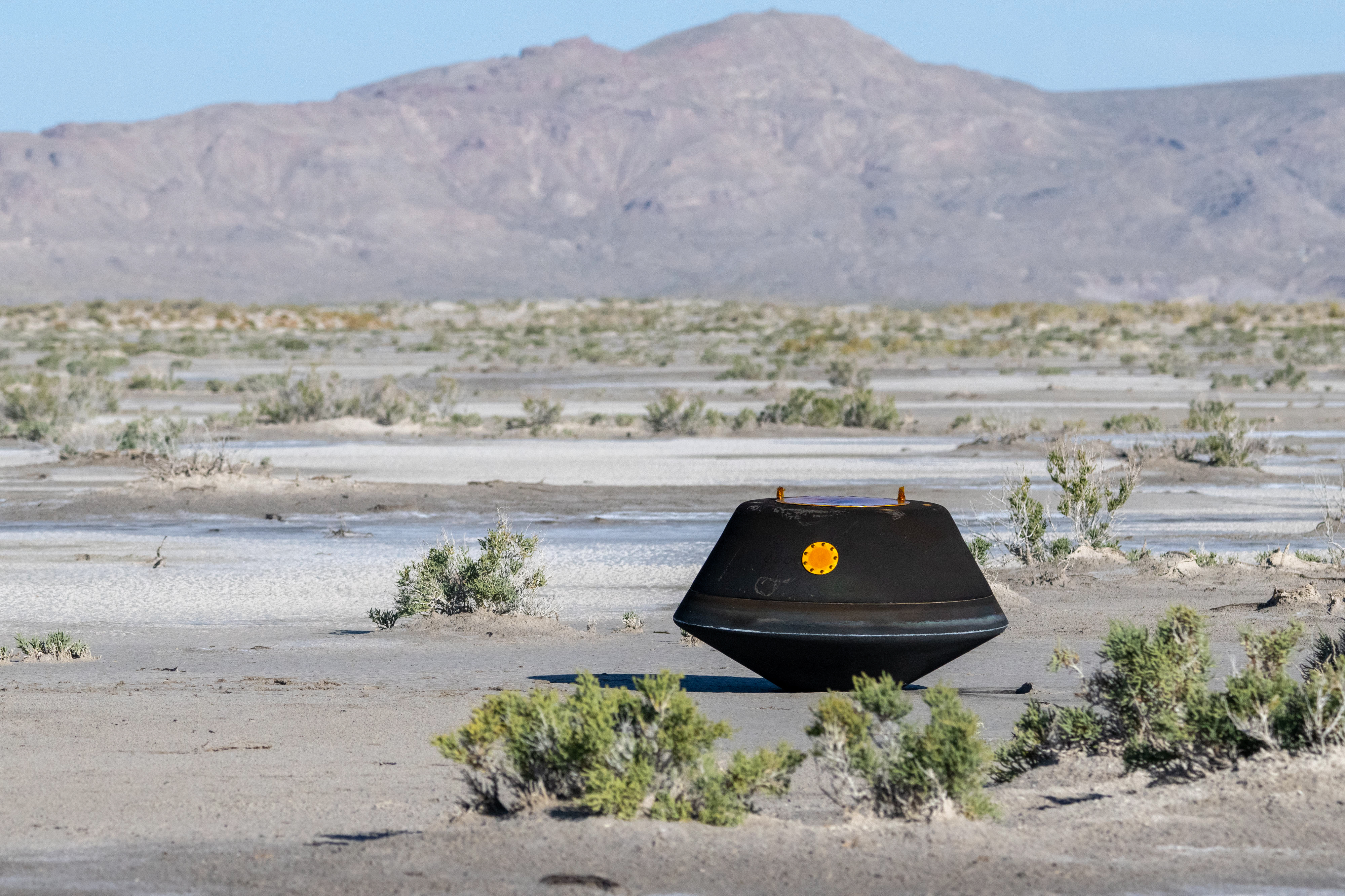Media release
From:
Pristine asteroid samples reveal secrets of the ancient solar system
Curtin University researchers have gained an unprecedented glimpse into the early history of our solar system through some of the most well-preserved asteroid samples ever collected, potentially transforming our understanding of planetary formation and the origins of life.
Experts from Curtin’s School of Earth and Planetary Sciences were selected to be amongst the first in the world to inspect samples collected during NASA’s seven-year, OSIRIS-REx mission to the ancient asteroid Bennu.
Asteroid Bennu is thought to be made of rubble fragments from a 4.5-billion-year-old parent body, containing materials that originated beyond Saturn, which was destroyed long ago in a collision with another object.
The OSIRIS-REx sample analysis team identified a variety of salts, including sodium carbonates, phosphates, sulphates, and chlorides.
Associate Professor Nick Timms said the discovery of these salts was a breakthrough in space research.
“We were surprised to identify the mineral halite, which is sodium chloride — exactly the same salt that you might put on your chips,” Associate Professor Timms said.
“The minerals we found form from evaporation of brines – a bit like salt deposits forming in the salt lakes that we have in Australia and around the world.
“By comparing with mineral sequences from salt lakes on Earth, we can start to envisage what it was like on the parent body of asteroid Bennu, providing insight into ancient cosmic water activity.”
Evaporite minerals and brines are known to help organic molecules develop on Earth.
“A briny, carbon-rich environment on Bennu’s parent body was probably suitable for assembling the building blocks of life,” Associate Professor Timms said.
The key to the new discovery was the pristine condition of the samples.
Many of the salts present degrade quickly when exposed to the atmosphere, however the samples collected on the OSIRIS-REx mission were sealed and purged with nitrogen once on Earth to prevent contamination.
NASA chose Curtin to perform early analysis on the samples — the largest ever retrieved from a world beyond the Moon — due to the globally renowned John de Laeter Centre’s world-leading expertise and facilities.
Centre Director Associate Professor Will Rickard said the facility houses more than $50 million in advanced analytical instruments.
“The Centre is one of the few places in the world which could verify if the salts were in fact extraterrestrial in origin or if they had been contaminated by elements from Earth,” Associate Professor Rickard said.
“Our specialised facilities at Curtin allowed us to maintain the pristine condition of the samples, which meant when we discovered the salts were extraterrestrial and unaltered, we knew it was an important finding because these samples preserve evidence of some of the earliest phenomena of the solar system.”
The findings from returned samples of asteroid Bennu may provide researchers insight into what happens on distant icy bodies in our solar system, such as Saturn’s moon Enceladus and the dwarf planet Ceres in the asteroid belt.
“Both Enceladus and Ceres have subsurface brine oceans,” Associate Professor Timms said.
“Even though asteroid Bennu has no life, the question is could other icy bodies harbour life?”
NASA’s Goddard Space Flight Center in Greenbelt, Maryland, provided overall mission management, systems engineering, and the safety and mission assurance for OSIRIS-REx.
Dante Lauretta of the University of Arizona, Tucson, is the principal investigator.
The university leads the science team and the mission’s science observation planning and data processing.
Lockheed Martin Space in Littleton, Colorado, built the spacecraft and provided flight operations.
‘An evaporite sequence from ancient brine recorded in Bennu samples’ was published in Nature.
Ends…/



 Australia; International; QLD; WA
Australia; International; QLD; WA



